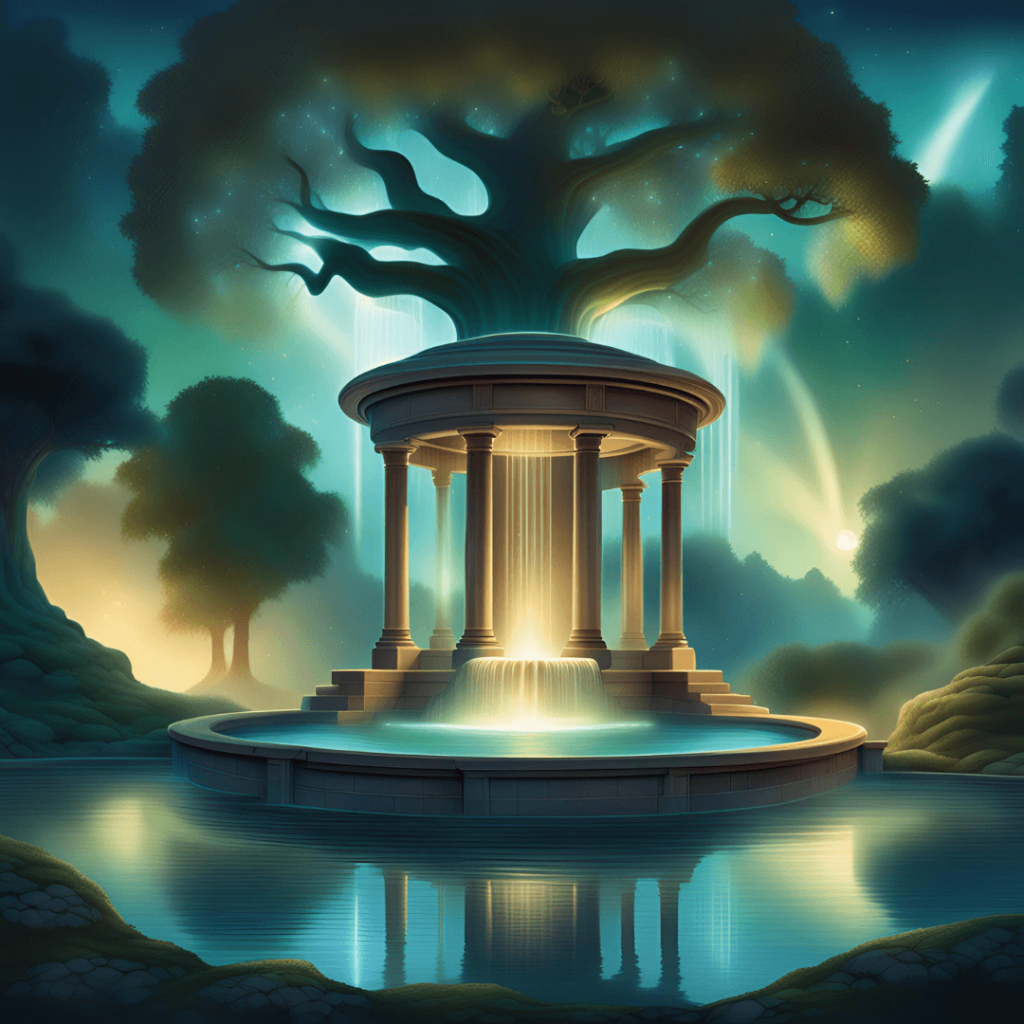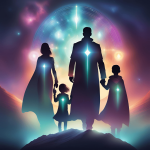Odin is known as the most powerful and wisest god in Norse mythology. He is the son of the giant Bor and the giantess Bestla. Odin is the ruler of Asgard and the highest of the Aesir gods. He helped in the creation of the world. In Norse mythology, Ymir (or Ymer) is the first giant and symbolizes the beginning of chaos. Ymir’s body was born in the dark and chaotic universe before the world was created. Odin and his brothers Vili and Vé killed Ymir and created the world from his body. After Ymir’s death, Odin and his brothers created the first humans on Earth. These humans are known as the first couple, Askr (male) and Embla (female). According to many sources, Odin created these two humans from a tree. The creation of humans is seen as a step towards restoring balance in the universe.
Odin is the leader of the Valkyries and the god who takes chosen warriors to Valhalla. In Norse mythology, there are multiple realms of the dead:
- Valhalla: The spirits of warriors chosen by Odin go here.
- Helheim: This is the realm where those who die in battle but are not chosen by Odin go, ruled by the goddess Hel. Odin has also visited here and conversed with the spirits in this realm.
- Niflheim: A realm shrouded in ice and mist, it is the deepest and darkest of the worlds of the dead.
Odin is a god capable of spiritual journeys between these realms, one who can cross the veil between life and death.
In Norse mythology, the Valkyries are warrior female spirits who serve Odin and carry fallen heroes to Valhalla. They are Odin’s loyal servants and are often described as Rider Warrior Women. These women collect the souls of heroes who die in battle and bring them to Valhalla, the grand hall where Odin’s eternal warriors dwell. The Valkyries choose only the bravest and most honorable warriors to take to Valhalla. Therefore, the Valkyries are also regarded as harbingers of death and goddesses of victory. Odin, as the god who leads the Valkyries, is their master. These warrior women act according to Odin’s commands as they return to Asgard each day. Their task is to select the bravest warriors who fall in battle and prepare them to live and fight in Odin’s realm. One of Odin’s most well-known qualities is his desire to gather the souls of the dead and offer them a second chance. The Valkyries carry out this task under his direct leadership and guidance. Additionally, the Valkyries summon warriors to Valhalla for great battles like Ragnarok (the end of the world), where the heroes prepare for one final fight.
Odin is associated with war, wisdom, poetry, death, and magic. One of his most prominent traits is his desire to see everything and know everything. Odin’s wisdom was not innate; he gained it through great sacrifices.
Odin and Yggdrasil: A Nine-Day Sacrifice for Wisdom

According to Norse mythology, Odin hung himself from the sacred tree Yggdrasil at the center of the world by his own will. He hung there for nine days, starving and thirsty, enduring pain and waiting. This sacrifice taught him the secrets of the runes and made him a more powerful god.
- What is Yggdrasil?
Yggdrasil is the World Tree at the center of the universe in Norse mythology. Its roots extend into three different realms and connect all of existence. - Why Did Odin Hang Himself?
Odin’s goal was to reach wisdom and secret teachings. To achieve this, he pierced himself with his spear Gungnir and hung from Yggdrasil. He endured pain for nine days and, in the end, gained the wisdom of the runes.
Odin’s Sacrifice of His Eye: Drinking Wisdom from Mimir’s Well
Odin did not settle for just the knowledge of the runes. In his quest for greater wisdom, he reached Mimir’s well.
Who is Mimir?
Mimir is one of the most important and profound figures in Norse mythology. His name means ‘wisdom’ or ‘mind,’ and in this sense, he stands out as a character symbolizing wisdom in many stories. Mimir is often associated with ‘Mimir’s Well’ (Mímisbrunnr), a well that is filled with wisdom and knowledge. Mimir is the guardian of this well. He is not only a powerful source of knowledge but also one of Odin’s most valued advisors.
Mimir’s name is associated with wisdom and strategic thinking. One day, a great war breaks out between the Aesir and Vanir races. However, at the end of the war, a peace treaty is made, and it is decided that each side will send one of their most knowledgeable members to the other. As part of this agreement, Mimir is sent by the Vanir to the Aesir side and begins advising Odin. Mimir not only provides Odin with war strategies but also shares knowledge about the deep secrets of life and the universe.
Mimir’s well is considered the source of wisdom and knowledge. In his quest for wisdom, Odin desires to drink from Mimir’s well. However, to be able to drink from this water, he must make a great sacrifice. According to the legend, Odin gives one of his eyes to Mimir in exchange for the water. This symbolizes Odin’s deep devotion to knowledge and his desire for wisdom, which he values above all else. The water from Mimir’s well is the source of all knowledge in the world, and by reaching this source, Odin gains a profound understanding of the secrets of the universe.

Mimir’s head not only serves as a source of wisdom but continues to provide knowledge to Odin even after it is severed. After the peace treaty between the Aesir and Vanir, the Vanir eventually feel that they have been wronged for sending Mimir to the Aesir and plan to take revenge. They cut off Mimir’s head and send it to Odin. This marks a tragic turning point in Mimir’s life.
Odin takes Mimir’s head and keeps it, but despite being severed, Mimir’s head continues to offer Odin constant knowledge. This symbolizes the enduring and powerful nature of Mimir’s wisdom and intellect. Even though Odin has lost Mimir in a physical sense, the head continues to guide him, and he still uses it as a source in a spiritual sense.
Odin’s Animals

Hugin and Munin: The Ravens
Odin has two ravens named Hugin and Munin. These ravens play a crucial role in his quest for wisdom. The meanings of Hugin and Munin are also quite significant:
- Hugin: It means ‘thought’ or ‘mind.’ Hugin symbolizes Odin’s intellect, thinking power, and ability to make decisions.
- Munin: It means ‘memory.’ Munin plays an important role as a symbol of Odin’s memory, carrying the knowledge and experiences of the past.
Every day, Odin orders these ravens to travel from Asgard to the world and bring him information. Hugin and Munin observe the entire world throughout the day and report back to Odin in the evening. This symbolizes Odin’s ability to see and know everything. In short, whenever Odin has questions about the future or desires knowledge, he either asks someone or gathers information from his animals.
Sleipnir: The Eight-Legged Horse
Sleipnir is one of Odin’s most famous animals. This eight-legged horse has the ability to move at incredible speed and is described as a being capable of swiftly traveling between Asgard and the other worlds.
Sleipnir is not just a horse, but also a symbol of power, speed, and interdimensional travel. Odin’s Sleipnir is a strong companion who always accompanies him on his journeys to Asgard. This horse plays a particularly important role during Ragnarok.
Geri and Freki: The Wolves
Odin’s two wolves, Geri and Freki, are his hunting animals and serve him loyally.
Odin’s Death
Odin’s death occurs during Ragnarök (the apocalyptic battle) in Norse mythology. In this great battle, the gods and giants fight each other. Odin is killed by the giant wolf Fenrir. With his immense strength, Fenrir catches and kills Odin. However, after Odin’s death, his son Vidar avenges him by killing Fenrir. Odin’s death is a part of Ragnarök and symbolizes the beginning of the chaos that will destroy the world. However, this death also leads to the birth of a new world.
Odin’s Appearance and Symbols
- He is usually depicted as an old man with a long white beard.
- He has only one eye, as he sacrificed one of his eyes to gain wisdom from Mimir’s well.
- His eyes are sky blue or gray.
- He wears a wide-brimmed hat or helmet, and sometimes a cloak.
- His two ravens, Hugin (Thought) and Munin (Memory), travel the world daily and bring him news.
- His two wolves, Geri and Freki, are by his side on the battlefield.
- His eight-legged horse, Sleipnir, is the fastest and strongest horse in mythology.
- Deer: In Norse mythology, particularly in stories revolving around Yggdrasil, the World Tree, there is a connection between Odin and deer.



